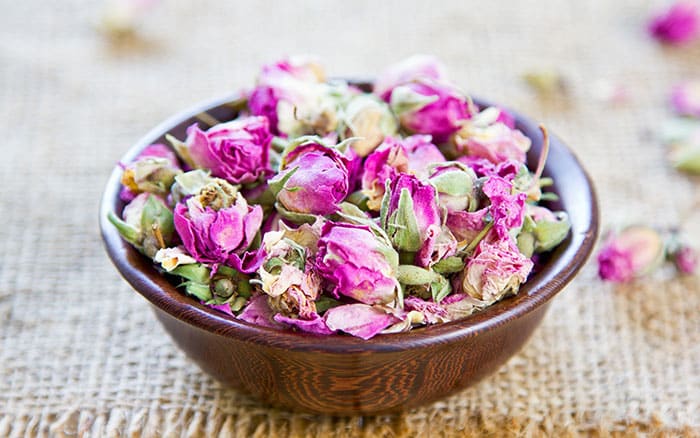Potpourri is a way of bringing plants indoors and using these elements and other natural materials for fragrance within the home. Here’s a guide on how to make homemade potpourri.
About potpourri
Potpourri means a mixture or medley of things. In this case referring to petals and spices used to create a fragrant mix for indoors. In fact, the word comes from the French ‘pot pourri’ which means ‘putrid pot’ or ‘rotten pot’ because it was the name given to a stew made up of a mix of different meats. But that’s not what we’re making here.
The joy of making potpourri is that you can use an abundance of the plants that are at your fingertips in the garden. This makes it an inexpensive way of bringing nature and fragrance into your home.
There are many plants that can be grown with the purpose of using them in potpourri. Some of them include calendula, pansies, rose, and chrysanthemums. As well as flowers, other natural materials can be used to add texture, fragrance, and interest to the mix. Small pinecones, dried berries, star anise, and cinnamon sticks are popular to use.

How to make potpourri
For a quick potpourri recipe grab a bowl and mix together:
- Dried rose petals
- Dried rosemary
- Dried lavender
- Ground cloves
- Cinnamon
- Dried rosebuds
- Orange peel
- A few drops of lavender/rose oil
- A fixative like orris root
The purpose of a fixative is to reduce the rate at which the scents from the plants evaporate. Therefore, keeping the potpourri smelling better for longer.
Of course, there are a few factors that can impact how long the fragrance lasts for. It could be anywhere between a couple of months or years. You can increase the likelihood of the fragrance keeping by ensuring the bowl isn’t situated in the sun. Another way to keep the scent is to protect it in a glass container when not in use.
Using a few drops of essential oils is ideal for adding an extra boost of stronger, rich fragrance. You can choose one that suits your tastes. But some popular ones include lavender, citrus, cinnamon, lavender, and pine.

Drying flowers
There are a few ways to try flowers for potpourri.
Air drying is one method, which involves cutting the flowers, keeping the stems intact which allows them to be tied together and hung upside down. Position them in a dry spot with low light and good ventilation and air circulation. This is a useful method for carnations, lavender, and sunflowers.
Another way of drying flowers is using silica gel. To practice this method, cut the flower heads off the plants to be dried. Put the silica gel in a plastic container, then add the flowers and surround them by more gel. Check on them every few days to check as the gel absorbs the moisture from the flowers. This is especially good for hellebores and roses.
Drying flowers with silica gel can also be done quicker by speeding up the process in the microwave. Read my blog to find out how.
Interior design
Another important thing is to display the homemade mixture so it looks great and so you can make the most of the delightful aromas. When choosing a container to display it in, opt for baskets, glass jars, and bowls. Don’t choose metal containers as these can react badly with the oils. Glass bowls and jars are great because it allows the mixture to be seen all the way through from different angles.
You can add even more fragrance to the display by placing a candle on a wide plate or bowl and surrounding the candle with the homemade potpourri.


Leave A Comment